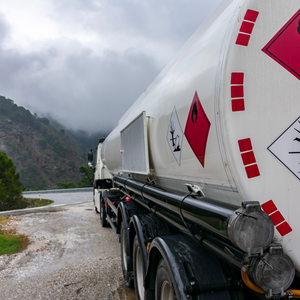TRANSPORTATION OF DANGEROUS GOODS
Dell Tech offers expert guidance & training for the transportation of dangerous goods. Transportation regulations are constantly changing, and Dell Tech ensures that the most up-to-date regulations are purchased and available to best support our clients.
TRANSPORTATION OF DANGEROUS GOODS
The United Nations Recommendations on the Transport of Dangerous Goods are contained in the UN Model Regulations, also known as the ‘Orange Book’. The Model Regulations are prepared by the Committee of Experts on the Transport of Dangerous Goods of the UN Economic and Social Council (ECOSOC). They cover the transportation of dangerous goods, also known as hazardous materials, by all modes of transport. Additionally, there are country-specific requirements and exemptions that must be taken into consideration when products are transported or shipped nationally or across international borders.
- Canada’s transportation by road/rail is known as the Transportation of Dangerous Goods (TDG).
- The United States’ transportation of hazardous materials is regulated by the U.S. Department of Transport (DOT).

The transportation of dangerous goods is divided into 9 classes, each with their own unique criteria. This criteria can be subdivided into divisions, dependent on the class, and Packing Group Assignments or Compatibility Groups may also exist for some classes.
For example, some of the most common dangerous goods, such as Sodium Hydroxide, are assigned a unique UN number, whereas some of the less commonly transported chemicals can use generic codes such as UN3265; CORROSIVE LIQUID, ACIDIC, ORGANIC, N.O.S.
HOW DELL TECH CAN HELP
Transportation of Dangerous Goods is a critical component of every company’s product safety plan. The Dell Tech Product Safety Team has been trained, tested and received certification in accordance with the requirements for TDG, DOT, IATA and IMDG. Our team is vigilant in keeping their transportation certifications up to date in order to:
- Provide guidance on the proper shipping description (ISHP) of your product in accordance with TDG, DOT, IATA, and IMDG
- Perform Hazard Classification Testing for Class 8 and Class 3 materials
- Advise on the appropriate UN number and Packing Group assignment
- Prepare mandated TDG Proof of Classification documentation
- Provide guidance on exemptions such as Limited Quantity and Excepted Quantities
- Provide guidance on Special Provision Requirements
- Provide guidance on placarding requirements, selection of packaging, and safety marks
- Provide guidance on dangerous goods shipping paper documentation
- Provide on-site TDG training for your staff
- Provide Emergency Response Assistance Plan (ERAP) assistance
- Provide assistance with CANUTEC registration
- Support your business with our full suite of safety data sheet services

Frequently Asked Questions about Transportation of Dangerous Goods (TDG)
What is a dangerous good?
A dangerous good, also referred to as hazardous material or hazmat, is a substance or material that poses a risk to health, safety, property, or the environment when being transported. Examples of dangerous goods include compressed gases, radioactive materials, flammable liquids, explosives, and infectious substances.
How do I know if my product is regulated as a dangerous good?
Products are classified as dangerous goods based on their properties, such as flammability, toxicity, and explosiveness. This classification helps determine appropriate handling procedures, packaging materials, and safety precautions during transportation. It is important to consult relevant regulations and guidelines that outline the criteria for classifying dangerous goods.
What regulation(s) govern the transportation of dangerous goods?
The transportation of dangerous goods is governed by various regulations and guidelines, in order to allow the movement of dangerous goods within and between countries. Each mode of transportation has a governing body that establishes rules and regulations for operating a commercial vehicle, vessel, airplane, or train. These regulations establish packaging standards, labeling requirements, and transport restrictions to ensure the safety of people, property, and the environment.
Are there any exemptions when you want to transport dangerous goods?
Exemptions may apply when transporting dangerous goods. These exemptions will depend on the specific dangerous goods regulations and jurisdictions involved. Common exemptions include limited quantity exemption and excepted quantities exemption. These exemptions provide reduced requirements for certain quantities or types of dangerous goods.
What are the risks of undeclared or mis declared dangerous goods?
Regardless of the shipping method, undeclared or misdeclared dangerous goods can pose significant risks to the health and safety of individuals and the environment during transportation.. Transporting undeclared or misdeclared dangerous goods violates regulations and can result in legal consequences, including fines or penalties, and reputational damage.


